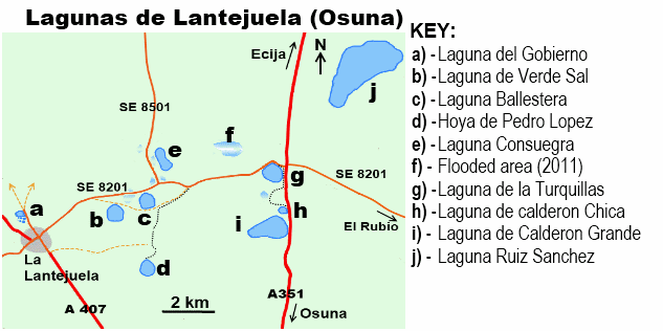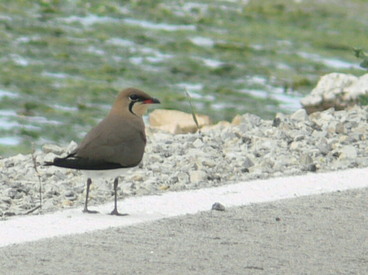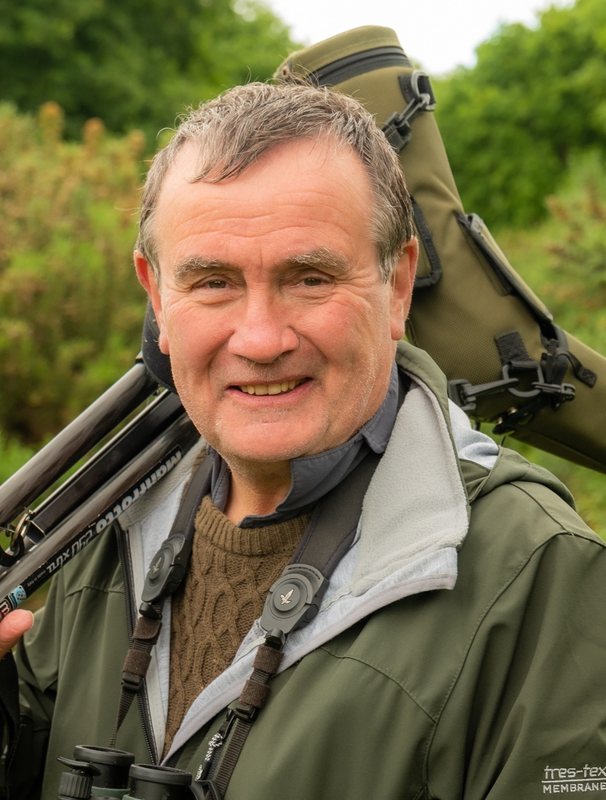
The main reason for my previous disappointment here was simple – the lagunas simply didn’t exist as significant bodies of water at the start of the decade. So much so that I struggled to find them at all and when I did, I was welcomed by birdless baked earth and cracked clay. Like so many shallow lagunas in southern Spain they seemed to be victims of intensive agricultural development. Although excessive abstraction is doubtless a problem, I later discovered that the long drought at this time had rendered them dry for pretty much most of the early 2000s. In truth, the alternative name for many of theses lagunas, ‘hoya’ (= depression) shows that these lakes have always suffered from summer drought. What made the difference at the time I first visited was that the usual winter rains hadn’t materialised.
Although declared a reserve in 1989, the lagunas don’t seem to have received too much attention until relatively recently. For example even an official leaflet on the area has a table showing whether the lagunas were inundated or not which has no details for 2001, leaves the winters of 2002 and 2003, spring of 2002 and summer 2003 as blank since they were ‘unvisited’. However, since c2009 things seem to have undergone a real change. Laguna del Gobierno now apprears to have a education/visitor centre, some lagunas have sprouted information boards, birding blogs have materialised on the web, ‘ornithological routes’ are being promoted and, in April 2011, the place even had a small ‘bird fair’! (see http://www.tierradelagunas.com/, http://lantejuelaturismorural.blogspot.com/
http://otistardalantejuela.blogspot.com/). There’s even a small booklet (in Spanish) on the birds of the area.
So, where are these lakes and what might you see there? The village of La Lantejuela is 18km north north of Osuna which is c90km east of Seville on the fast A 92 autovia. The handsome baroque town of Osuna, after which the lagunas are sometimes named, would make an excellent base to explore this area.

First, though, as you drive through La Lantejuela, keep a look out for a roundabout graced by an old well. Ignore the sign for El Rubio and, instead head back into the village on the Avenida de las Fuentes de Andalucia, but turn right almost at once into the Avenida de la Vereda de la Huerta. After about 800 metres you’ll find Laguna del Gobierno (a) on your left. Unfortunately, I only found out about this site via the internet on my return home so I’ve not yet visited it. The entrance is flanked by an avian themed decorated gateway and it appears to serve some educational/touristic function. The laguna itself is small and is flanked by some sort of water treatment works. Despite its size this would seem to be one of the few areas that always has some water and so in dry seasons could be a magnet for water birds. It also seems to have White-headed Duck. The road past the laguna continues, as a track, into the ‘campo’ and may prove worth exploring in the hope of finding bustards (both Great and Little Bustards occur in the area).
Return to the roundabout and, this time, take the road (SE 8201) for El Rubio. About 2.5 km from the roundabout there’s a good track running across the farmlands on your right. To be honest I’m not 100% about access here, but I’ve driven down it without any problems. After c700m you come to Laguna/Hoya de la Verde Sal (b) which, I suspect is more ‘hoya’ than ‘laguna’ since even in what seems a wet year it was dry. I had Stone Curlew here and the habitat did look ‘sandgrouse friendly’ (although Black-bellied Sandgrouse is somewhat rare in this general area). In April I continued along this track until I reached the back of Laguna Ballestera (c). In fact, it was so wet that the track was impassable; it should continue past the lake and back onto the SE 8021(see note on this track later). I’ve read that this lake is private so act accordingly. On both visits it held several hundred Flamingos. These should be checked carefully as Lesser Flamingo has been seen here several times. Also present were numerous Coots (Crested Coot is a rarity here, but it wouldn’t harm to check!), various ducks (inc. Red-crested Pochard and White-headed), Whiskered Tern and a few waders. As always, in Spain, the skies should be scanned for raptors – in summer Montagu’s Harrier seems common as does Lesser Kestrel. I’ve also had the expected Booted and Short-toed Eagles, Common Buzzard, Marsh Harrier and the like. Those unaware to the species rapid expansion over the last few decades might be surprised to see Black-winged Kite, but they’re now frequent here.
Another discovery via the internet once I returned to the UK was that a track/path runs south from Ballestera (c) to Hoya de Pedro Lopez (d). The name seems to suggests that it’s rarely wet (winter only?), but it could be worth exploring. A track, just south of the village on the A 407, may reach this hoya and possibly continues on to the track noted above. Again, I’m not sure about access, but a sendero (footpath) down to this site is marked on Google Earth. One for the explorer, perhaps!
Back on the SE 8201, continue eastwards towards El Rubio to get another view of Laguna Ballestera this time from the north. Don’t be fooled by a shallow depression just before this that can sometimes get flooded and hold a few Black-winged Stilt, Lapwings or even the odd Flamingo. Continue cautiously and carefully pull off the road (by a young olive grove) to view the area again.
Further along the SE 8201 (c5km from La Lantejuela), you reach a T-juntion; here the SE 8501 heads north and past the next site – Laguna Consuegra (e). In spring the junction here overlooked flooded fields which held good numbers of Lapwing, Black-winged Stilt and Gull-billed Terns. The laguna itself holds many of the species noted under Ballestera (inc. vagrant Lesser Flamingo), but, although odd tracks head off towards the water, I’m not sure about access here (once again I’ve been told it’s private). A kilometre after the T-junction, a track runs off at an acute angle to your right. This seems to lead back of Laguna Ballestera and is supposedly the start of a sendero (see map). It should be drivable, but an old (and almost indecipherable) sign suggests it’s a restricted military road – as elsewhere in Spain (e.g. Bolonia) these restrictions may no longer apply. Military land in the area has certainly reverted to civilian ownership, but I don’t know what the current situation is regarding access here.
Back on the now familiar SE 8201 continue towards El Rubio. In spring 2011 there was a large distant flooded area (f) to the north which was stiff with Flamingos, waders (inc. Greenshank, Green Sandpiper, Dunlins, etc). There’s a military college nearby and signs throughout this area remind you that it is/was a military zone so trespassing to get a better look might not be a good idea!
Roughly 10 km after leaving the la Lantejuela you reach the A 351 (Ecija-Osuna road) and with it the Hoya/Laguna de la Turquillas (g). When I came this way in 2002, this site was completely dry and looked as if it had always been so. The contrast this spring couldn’t have been greater. Below the still deep blue sky, a great mirror of water, generously punctuated by bright green reeds, was alive with birds. Dozens of Whiskered, and a few Black Terns, dipped and hovered above the water. A Squacco Heron fed in the shallows, A Purple Gallinule hunkered down in the reeds and amongst the many waterfowl a handful of White-headed Ducks could be found. Had I realised that Marbled Duck sometimes appear here, I’d have looked a bit harder! Dancing across the skies, and some nervously pacing the warm tarmac road, were numerous Collared Pratincole. Although I failed to see them, scanning this wetland paradise, it was no surprise to hear that Purple Heron, Little Bittern also breed and that Marbled Teal might be found in the Lagunas de Lantejuela. Google Earth suggests that a footpath runs from here, along the road and veers inland to what seems another ting laguna/hoya before reaching the tiny Laguna de Calderon Chica (h). However, when I visited it was under water and Google Earth images don’t seem to show it. Unfortunately, pulling off the SE 8102 here is a bit problematical as the road curves round a little and is flanked by crash barriers. Take care.
Turning south on the A 351 towards Osuna after c1.5 km you will find the Laguna de Calderon Chica (h)on the right. This laguna is less than a third of the size of the previous one and is set back further from the road. As the road was quite busy when I visited, gain pulling over on the hard shoulder was tricky and there seemed to be no good place to pull off the road. Clearly this laguna holds all the birds to be expected at Hoya/Laguna de la Turquillas and, although smaller, it seems less prone to dry out (it even had a little water on my first visit). Immediately to the south of Laguna de Calderon Chica is its larger neighbour Laguna de Calderon Grande (i). However, whilst it has a greater surface area than its near name sake, it’s much shallower and more often deserves to be called a ‘hoya’. Once more pulling off the road is tricky, but alt least there’s a track you could pull onto at its southern end. As with the previous lake, I’ve never really explored here. On my visits it had little vegetation, some Flamingos, the odd Whiskered Tern, but little else.
Anywhere along the A 351 has the potential to turn up Great Bustards, but finding somewhere safe to pull over is always problematical (although I’m probably more cautious than some). The best areas look to be to the west left 5-6 km north of the junction of the SE 8201. To the east, set amongst distant hills tantalisingly shimmering in the heat lies the Laguna Ruiz Sanchez (j). This the largest lake (356 hectares) in the complex and the second largest in Andalucia – only Fuente de Piedra is larger. Although usually dry in the summer, it was completely drained in 1967. However, after the Ministry of the Environment bought it in 2006 (for 6M€) restoration began in 2009. Unfortunately, none of the tracks off the A 351 head towards it and, although it has been visited by the Spanish environmental group ‘Ecologistas en Acción’, there doesn’t appear to be public access to what may well be the best site of all!
Two lagunas remain, Laguna de Cantera Romana and Laguna de los Ojuelos. Unfortunately, I can’t find exactly where the first is located although there are several apparent ‘hoyas’ visible on Google Earth that may fit the bill. The other laguna is well to the west of La Lantejuela and on private land. It was here that I saw Black-bellied Sandgrouse from a passing train and some of the direr more saline hollows in the area seem to have very similar habitats (see my previous blog on Great Bustard in the area).
So things seem to be looking up for this terrific site. In 2010 it got a grant of 600,000€ a grant to develop a visitors’ centre and encourage ‘eco-tourism.’ However, all is not as rosy as it seems as many feel the roads associated with this development, the construction of a visitors’ centre and the increase in visitors (some of whom will be encouraged to go horse riding here) will cause too much disturbance to this fragile habitat. Worse, in a classic left hand not knowing what the right is doing, in 2010 the city of Osuna was accused of drilling an illegal (!) well close to Laguna de la Turquillas and trying to promote irrigated farmland in this sensitive area. Although I have much sympathy with those who object to
an ‘eco-touristic’ development here, I can’t help feeling that exactly the same objections could have been raised about the development of Minsmere, Titchwell and many other sites in the UK. They didn’t turn out too badly did they? Done sensitively, some eco-tourist infrastructure could do much to safeguard this wonderful area. Frankly, with the threat of irrigation hanging over the site, it may be a risk we just have to take.

 RSS Feed
RSS Feed
